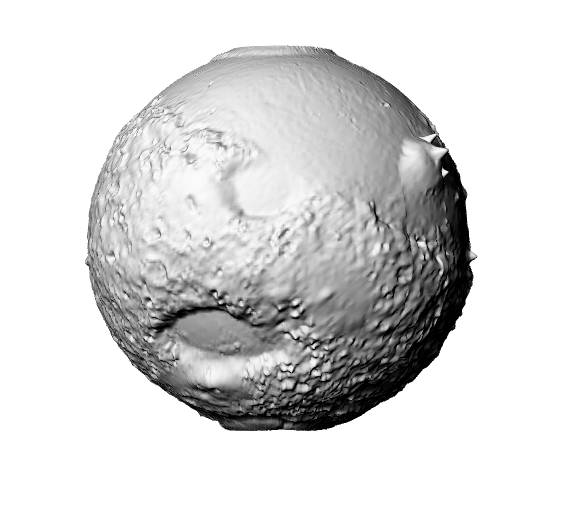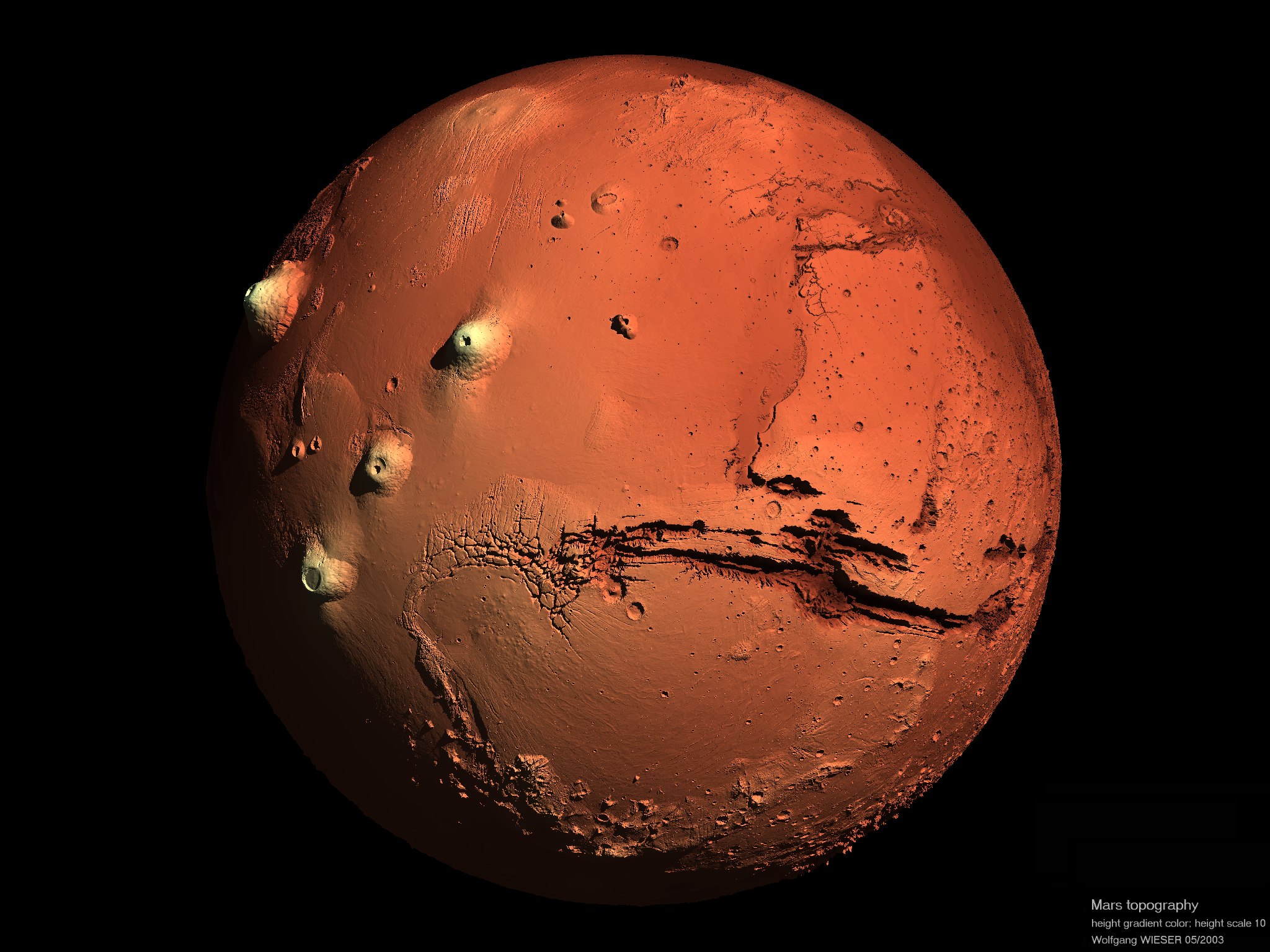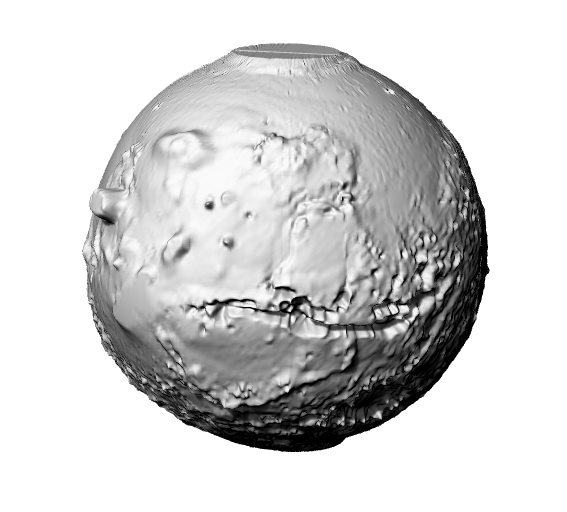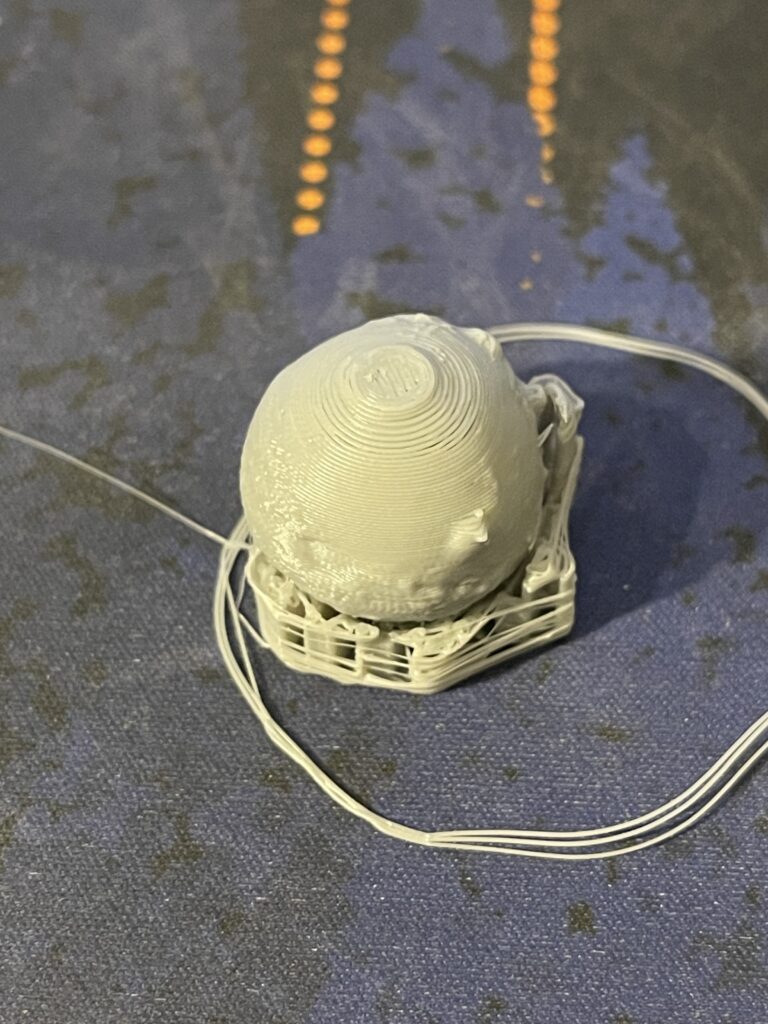Progress
In the pursuit of printing 3D planets from their 2D topological maps, I’ve made a good amount of progress in much of the computational portion. Following in the footsteps of Jamie’s original Large Assignment 3 submission for Data Physicalization, I was able to create an algorithm that takes a greyscale topological map of a terrestrial body and turns it into a spherical 3D representation of that topological map. The algorithm assumes that the original map is built from Mercator projection, but I’m looking into the feasibility of using more accurate, and much more advanced, techniques to translate the data. (check out the ridge and mountain ranges!)



Taking a sphere planet like Mars in our solar system from the model to the print however is a different problem. For this project I wanted to see what sort of methods might be best for printing both hemispheres at once, and have come up with a few prototypes that I think show a good direction for the remaining portion of the project. Starting with small “toy” prints I’ve seen good results in both resolution as well as defects. I’d like to look further into resolving some of the bottom side printing that is so difficult, potentially by bringing in another computational aspect to build these “poles” that support the planet but also serve an aesthetic or functional purpose.
A slightly surprising aspect that I’ve come across thus far in my project is how much data cleaning will affect the final outcome using this algorithm. As an example, the Mars render has a very good smoothness to it while still having plenty of detail to see the planets landscape, but the Earth render is less clean simply because I’m struggling to find a good map. I think I may have to find something close and alter it myself for the best final results. Below you can see the Earth render as well as the two different print methods for the Mars model (supports vs standing).




Overall I’m happy with where the project is at, though I do wish I could be slightly less limited by the printing method I have. The Mars model really came out well aside from some slight defects which should be smoothed over in the final version. I’m looking forward to making many different kinds of these “toys”/ art pieces which can take advantage of the planets form in interesting ways.
Deliverables
- Experimentally sized spheroids to document behavior
- Spherically printed objects using different materials (
ceramic, metal, etc.) (marble PLA, basic gray PLA) - Algorithm to take topological data of a planet and wrap it accurately into in a sphere shape
- Examples of other computational design techniques to alter the shape into practical forms (lamp shade, mug, etc.)
Timeline
Nov 3: Test simple size and other slicer changes to find most stable settings for spheroid printingNov 7: Test simple spherical shape printing in the labs clay/metal printer for feasibility (knowledge and properties alike)(scraped due to time difficulties)Nov 14: Research and create algorithms to translate planetary topological maps into Rhino geometryNov 28: Extra time for algorithms if problems arise, use subtractive modeling for interesting practical changes- Dec 3: Cleaned and usable topological maps for all terrestrial planets, print method finalized (new)
- Dec 7: Create finalized forms with highest refinement found through the previous steps (slightly revised date)
Hi Christopher, good job on your progress. I think your models look really neat. I think it must be very challenging to do the entire sphere.
Good luck on finalizing your project.
Hi Michaela,
Thank you for the compliment!! Originally I knew that the spheres would be difficult, but it’s actually been fun to see what kind of things I can get away with while printing it! I’m still looking into how I want to print them for my final print, but I hope it retains the resolution!
Hi Christopher, this is really neat! I am particularly excited how you translate these things to practical items. The map component and how your data is cleaned up is also very interesting. Good luck!
Hey Erin,
Thanks for the comment! There’s actually so many things that could be printed practically from these spheres, and I’m looking forward to playing around with them and creating an assortment of functional items! The data cleaning has actually become the hardest part easily, so here’s hoping my solutions help that in the final print!